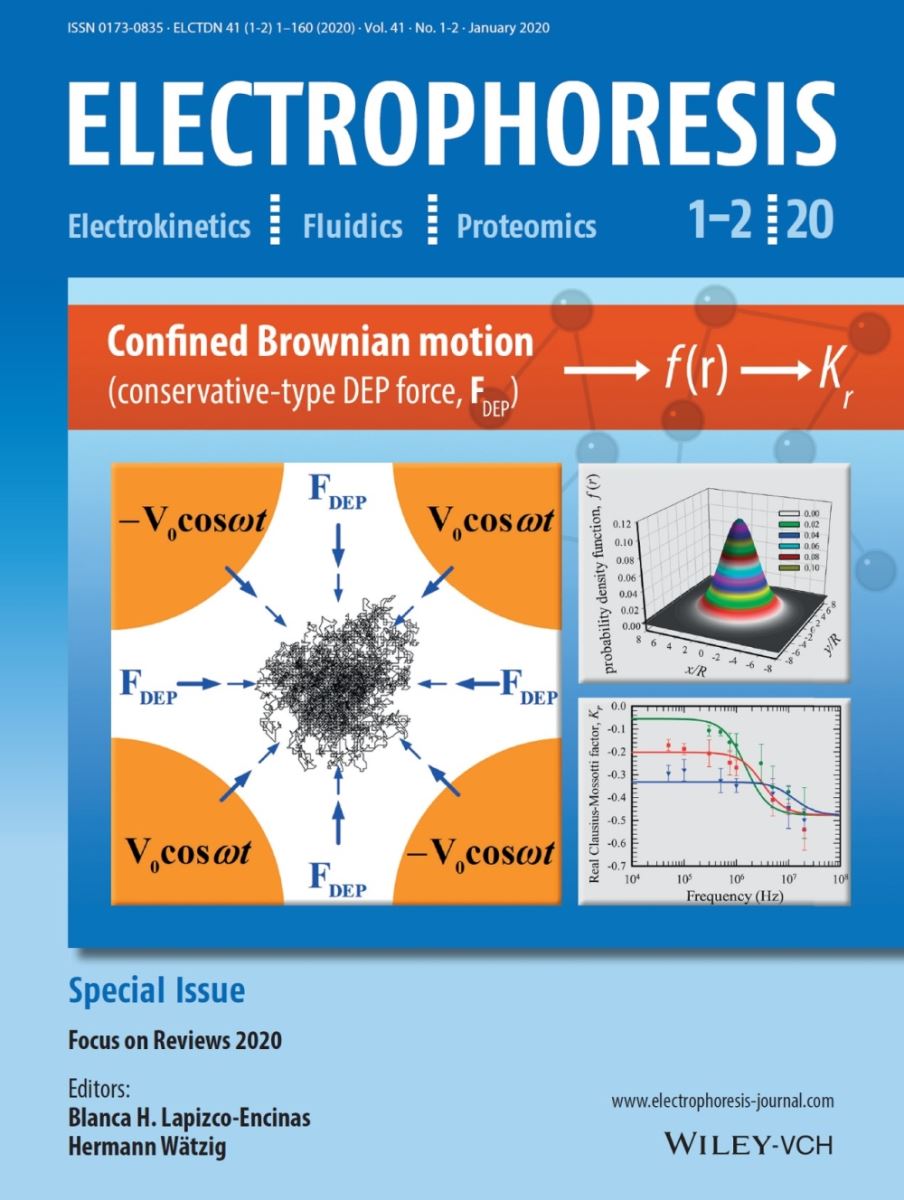The Publication of Dr. Ying-Jie Lo and Prof. U Lei Selected as the Cover of Journal《Electrophoresis》
Measurement of the real part of the Clausius–Mossotti factor of dielectrophoresis for Brownian particles
Ying-Jie Lo (羅英傑) and U Lei (李雨)
Electrophoresis 2020, 41, 137–147. DOI: 10.1002/elps.201900345
Dielectrophoresis is the movement of dielectric particles in electrolyte under an applied electric field. A particle is polarized by the electric field, and can be treated as an equivalent dipole, so that a force, called dielectrophoretic force, can be exerted to the particle when the applied field is spatially non-uniform. The particle can be manipulated and characterized through the dielectrophoretic force, and dielectrophoresis was demonstrated as a powerful tool in many biomedical applications. AC electric field was employed for generating delectrophoresis in practice, in order to avoid hydrolysis. The dielectrophoretic force depends linearly on a parameter, Kr, the real part of the complex Clausius-Mossotti factor. The role of Kr in dielectrophoresis is similar to that of the Young’s modulus in Elasticity and the viscosity in Fluid Mechanics; one can calculate the dielectrophoretic force only when Kr is known. Kr depends on the dielectric properties (dielectric constant and conductivity) of both the particle and the surrounding fluid, as well as the applied electric frequency. However, the constituent of many biological particles is complicated, with their dielectric properties usually unknown, and thus the associated Kr cannot be evaluated based on its definition. Thus it would be much helpful if Kr could be measured directly. However, the measurements of Kr are rather limited in the literature. For particles, like cells, with sizes of order of 10 mm, one can design the experimental method and the associated microfluidic device for measuring Kr based on Newton’s second law of motion, and the work by the research group of the author developed earlier is a typical example (Applied Physics Letters, 104, 083701, 2014). For submicron and nano-sized particles (such as protein and virus), the particle movement is dominated by Brownian motion, and one had to develop the theory and the method of measurement based on statistical mechanics. The authors adopted the Smoluchowski equation for the description of the probability density function of the displacement of a particle undergoing Brownian motion in a conservative force field. The associated device is a polydimethysilloxane microchannel with four planar hyperbolic electrodes built on its glass substrate. An approximate two-dimensional spring-like dielectrophoretic force is generated in the device, and the data necessarily measured is the time evolution of the in-plane particle displacement undergoing confined Brownian motion. The probability density function was extracted from the displacement data, and thus Kr was derived. Validity of the measurement was checked against the zeta potentials in the literature based on the classical theory of surface conductance using polystyrene particles of size of one micron. Extension of the method to the measurement of permanent dipole moment and total polarizability of particle was developed theoretically and discussed by incorporating an optical tweezer into the device. For further information, please refer to the published article through the following links, or contact: Professor U Lei, leiu@iam.ntu.edu.tw.
https://onlinelibrary.wiley.com/doi/full/10.1002/elps.201900345
https://onlinelibrary.wiley.com/doi/abs/10.1002/elps.202070007
